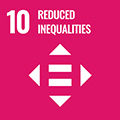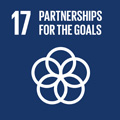- Docente: Roberta Paltrinieri
- Credits: 6
- Language: Italian
- Teaching Mode: Traditional lectures
- Campus: Bologna
- Corso: First cycle degree programme (L) in Communication Sciences (cod. 8885)
Learning outcomes
Students learn tools to observe the contemporary complexity of the public space of communication, since it includes many forms, channels and sources of information, but also unequal opportunities to access and to practice them.
Course contents
Learning outcomes
At the end of the integrated course the student has achieved the basic knowledge necessary to analyze the different forms of communication that can be found in the contemporary social space. The student will also be able to recognize analogies and divergencies between different contexts of social interaction (face-to-face or distanced).
Contents
The integrated course of Sociology of Communication (1) and Sociology of Communication (2), 6+6 CFU, consists of a single study program, to be considered in its entirety.
Themes discussed during lectures
Definition of communication as a process and a social practice
The subjects of communication and their purpose
Communication as a symbolic process: between symbols and reality
Communication between comprehension and interpretation
Social functions and uses of communication
Mediatization of reality, producing and consuming media
The theory of audience
In the first part of the course the students will receive basic notions and tools for understanding the sociological perspective of studying social processes and practices.
In the second part of the course the lectures will focus on the analysis of the processes of codification, comprehension and interpretation of signs and messages, with regards to the main theories of mass communication. The course will study in depth the theme of audiences, starting from Sociology of Consumption.
Readings/Bibliography
G. Boccia Artieri, F. Colombo, G. Gili, Comunicare, persone, relazioni, media, Laterza, Bari, 2022
S. Bentivegna, G. Boccia Artieri, Teorie delle comunicazioni di massa e la sfida del digitale, Laterza, Bari, 2019
E. Goffman, L’ordine della interazione, Armando, Roma, 1998
Teaching methods
Lectures will be both face-to-face and interactive. During the course, audiovisual materials (films, videos, etc.) will be used, and there will be discussion meetings with experts in the field of communication. There will be moments of discussion with students on the themes proposed during the lecture
Assessment methods
Although divided into two modules, the Sociology of Communication course is an Integrated Course and provides a single examination for a total of 12 CFU.
NON-ATTENDING STUDENTS:
Oral test on all the texts indicated in the bibliography for the exam.
ATTENDING STUDENTS:
Those who have accrued attendance of at least 85% of the lectures are considered attending students. At the end of the first 5 weeks, attending students must pass a final test on the topics and concepts discussed during the Sociology of Communications (1) course. The exam consists of a test with multiple-choice questions and an open-ended question.
Only those who have passed the first test may take the second final test, at the end of the Sociology of Communications (2) course. The test will include open-ended questions. The final grade will be the average of the marks received in the two exams.
Those who cannot attend the second test for any reason, despite having passed the first one, will have to take the entire exam as a non-attending student
Teaching tools
sildes video
Office hours
See the website of Roberta Paltrinieri
SDGs



This teaching activity contributes to the achievement of the Sustainable Development Goals of the UN 2030 Agenda.
